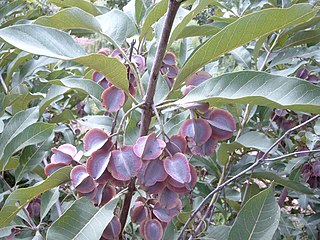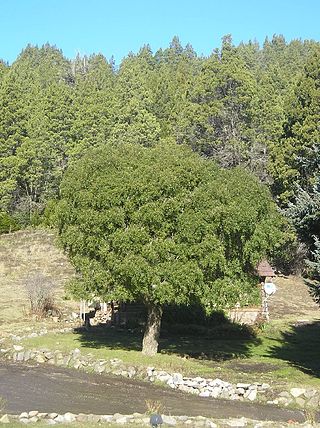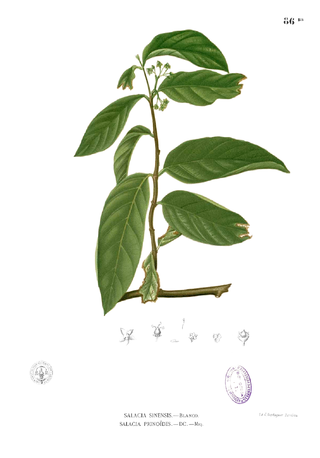
The Celastraceae are a family of 98 genera and 1,350 species of herbs, vines, shrubs and small trees, belonging to the order Celastrales. The great majority of the genera are tropical, with only Celastrus, Euonymus and Maytenus widespread in temperate climates, and Parnassia (bog-stars) found in alpine and arctic climates.

Combretum, the bushwillows or combretums, make up the type genus of the family Combretaceae. The genus comprises about 272 species of trees and shrubs, most of which are native to tropical and southern Africa, about 5 to Madagascar, but there are others that are native to tropical Asia, New Guinea and the Bismarck Archipelago, Australia, and tropical America. Though somewhat reminiscent of willows (Salix) in their habitus, they are not particularly close relatives of these.

Indigofera is a large genus of over 750 species of flowering plants belonging to the pea family Fabaceae. They are widely distributed throughout the tropical and subtropical regions of the world.
Glyptopetalum is a genus of plant in the family Celastraceae.

Maytenus is a genus of flowering plants in the family Celastraceae. Members of the genus are distributed throughout Central and South America, Southeast Asia, Micronesia, and Australasia, the Indian Ocean and Africa. They grow in a very wide variety of climates, from tropical to subpolar. The traditional circumscription of Maytenus was paraphyletic, so many species have been transferred to Denhamia and Gymnosporia.

Salacia is a genus of plants in the family Celastraceae. They are woody climbers naturally found in tropical regions.

Elaeodendron is a genus of flowering plants in the staff vine family, Celastraceae. It includes 39 species native to the tropics of the Americas, sub-Saharan Africa, Asia, Australia, and the South Pacific.

Cassine is a genus of trees, of the plant family Celastraceae.

Hippocratea is a genus of flowering plants in the family Celastraceae, usually lianas, native to tropical and subtropical North America, South America and Africa.
Gymnosporia arbutifolia is a species of flowering plant in the family Celastraceae. It is a thorny shrub or tree native to eastern Africa and the Arabian Peninsula. It grows in the mountains of eastern Africa, from the Ethiopian Highlands to the Albertine Rift, and to the southeastern Arabian Peninsula, from 1350 to 2080 meters elevation.








